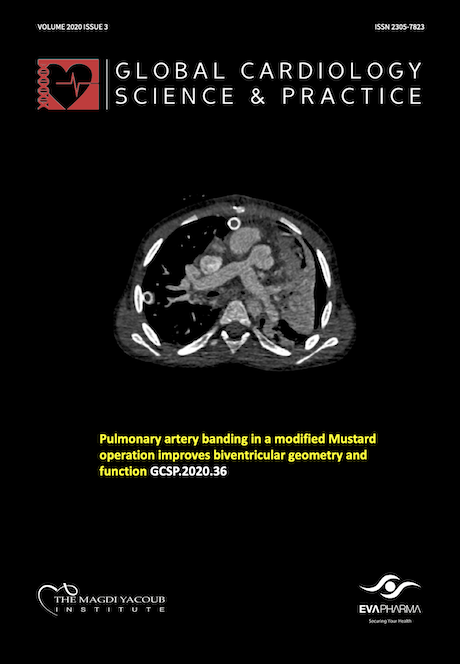Pulmonary artery banding in a modified Mustard operation improves biventricular geometry and function
DOI:
https://doi.org/10.21542/gcsp.2020.36Abstract
Patients with transposition of great arteries, with intact interventricular septum (TGA-IVS) and deconditioned left ventricle, represent a considerable challenge in developing countries. The modified Mustard operation was shown to provide a significant improvement for these patients, particularly by enhancing atrial functions and left ventricular filling. Yet, the problems of the systemic right ventricular dysfunction and the resulting secondary tricuspid regurgitation (TR) remain to be of major concern. In addition, the deviation of the interventricular septum towards the left side markedly impairs ventriculo-ventricular interaction and predisposes to dynamic left ventricular outflow tract obstruction (LVOTO). We report that adding a moderately loose pulmonary artery banding to the modified Mustard operation in a case of TGA-IVS results in improvement of biventricular geometry and function, tricuspid and mitral valve functions and disappearance of dynamic LVOTO.
Downloads
Published
Issue
Section
License
This is an open access article distributed under the terms of the Creative Commons Attribution license CC BY 4.0, which permits unrestricted use, distribution and reproduction in any medium, provided the original work is properly cited.


